Human Heart
swaraj barik
#poet #writer I live with pride and self-respect.Writing is not my profession but my addiction . Medical Consultant,NursingStaff onlinemedical tutor
Brief information about the Human Heart
The Cardiovascular System: A Lifeline of Circulation
The cardiovascular system is the body’s central transport network, comprising:
Cardio (Heart): Acts as a pump, ensuring a continuous flow of blood.
Vascular (Blood Vessels): A network of conduits guiding blood throughout the body
Dual Circulation of the Heart
1. Pulmonary Circulation: Transports deoxygenated blood from the heart to the lungs and returns oxygen-rich blood.
2. Systemic Circulation: Delivers oxygenated blood to tissues and brings back deoxygenated blood.
The Heart: Guardian of Homeostasis
The heart sustains balance in the body by ensuring oxygen and nutrient supply while expelling waste products.
Fascinating Heart Facts
Beats 100,000 times daily, totaling ~35 million beats annually.
Circulates 5 liters of blood per minute, ensuring tissue nourishment.
Pumps 14,000 liters per day, traversing 120,000 km of blood vessels.
The scientific study of the heart is called Cardiology.
Homeostasis refers to the body's ability to maintain stable internal conditions.
Heart Anatomy: The Powerhouse of Circulation
A cone-shaped muscular organ, about 10 cm long and roughly the size of a clenched fist.
Weight:
Men: ~310 g
Women: ~225 g
Location: Resides in the mediastinum within the thoracic cavity.
Neighboring Structures
Inferiorly: Apex
Superiorly: Aorta, Pulmonary Artery, Superior Vena Cava
Posteriorly: Esophagus, Trachea, Thoracic Vertebrae
Laterally: Lungs
Anteriorly: Sternum, Ribs, Intercostal Muscles
Layers of the Heart Wall
1. Endocardium (Inner Layer):
Lines heart chambers and valves.
Composed of smooth epithelial tissue.
2. Myocardium (Middle Layer):
Thick, muscular layer responsible for contractions.
Composed of involuntary, striated cardiac muscle.
3. Epicardium (Outer Layer):
Protective covering with two layers:
Outer Sac: Fibrous tissue.
Inner Sac: Serous membrane for lubrication.
Internal Heart Structure
The heart is divided into four chambers:
1. Right Atrium: Receives deoxygenated blood from the body.
2. Left Atrium: Collects oxygenated blood from the lungs.
3. Right Ventricle: Pumps deoxygenated blood to the lungs.
4. Left Ventricle: Distributes oxygen-rich blood to the body.
Valves Ensuring One-Way Flow
Atrioventricular (AV) Valves:
Tricuspid Valve (Right side)
Mitral Valve (Left side)
Semilunar Valves:
Pulmonary Valve (Directs blood to lungs)
Aortic Valve (Regulates flow to the body
Pathway of Blood Through the Heart
Deoxygenated Blood Flow:
1. Enters Right Atrium via Superior & Inferior Vena Cava.
2. Moves through the Tricuspid Valve into the Right Ventricle.
3. Ejected through the Pulmonary Valve into the Pulmonary Artery, reaching the lungs.
Oxygenated Blood Flow:
1. Returns via Pulmonary Veins into the Left Atrium.
2. Passes through the Mitral Valve into the Left Ventricle.
3. Propelled through the Aortic Valve into the Aorta, supplying the body.
The Heart’s Own Blood Supply
Coronary Arteries: Deliver oxygen and nutrients to heart tissues.
Venous Drainage: Blood from the heart muscle drains into the Coronary Sinus, which empties into the Right Atrium.
Electrical Conduction: The Heart’s Rhythmic Pulse
The heart beats through an intricate electrical conduction system, ensuring coordinated contractions.
SA Node (Pacemaker): Triggers the heartbeat.
AV Node: Delays impulses for proper ventricular filling.
Bundle of His & Purkinje Fibers: Distribute impulses for contraction.
The Cardiac Cycle: Phases of a Heartbeat
1. Atrial Systole (0.1 sec): Atria contract, pushing blood into ventricles.
2. Ventricular Systole (0.3 sec): Ventricles contract, propelling blood forward.
3. Complete Cardiac Diastole (0.4 sec): The heart relaxes, refilling with blood.
Heart Sounds (Auscultation Clues):
Lub (S1): Closure of Tricuspid & Mitral Valves (AV valves).
Dup (S2): Closure of Aortic & Pulmonary Valves (Semilunar valves).
Electrocardiogram (ECG): Mapping Electrical Activity
P Wave: Atrial depolarization (SA node firing).
QRS Complex: Ventricular depolarization.
T Wave: Ventricular repolarization.
Cardiac Output (CO): Measuring Heart Performance
Formula:
CO = Stroke Volume × Heart Rate
Stroke Volume: Amount of blood pumped per beat (~70 ml).
Factors Influencing Cardiac Output
Increase: Sympathetic stimulation, adrenaline, exercise.
Decrease: Parasympathetic activity, blood loss, dehydration.
Blood Pressure (BP) Regulation
Formula:
BP = CO × Peripheral Resistance
Systolic BP (~120 mmHg): Maximum arterial pressure during ventricular contraction.
Diastolic BP (~80 mmHg): Pressure during ventricular relaxation.
Regulatory Mechanisms:
Neural Control: Baroreceptors adjust heart rate.
Hormonal Influence: Adrenaline and aldosterone modify vessel tone.
Blood Vessels: The Circulatory Network
Types of Blood Vessels:
1. Arteries & Arterioles: Transport oxygenated blood away from the heart.
2. Capillaries: Micro-vessels facilitating nutrient and gas exchange.
3. Veins & Venules: Return deoxygenated blood to the heart
Collateral Circulation & Anastomoses:
Anastomoses: Natural bypass routes ensuring blood flow in case of blockage.
Found in the brain, heart, hands, feet, and joints.
Common Cardiovascular Disorders
Coronary Artery Disease (CAD):
Cause: Plaque buildup in arteries (Atherosclerosis).
Risk Factors: Smoking, hypertension, diabetes, high cholesterol, obesity, genetics.
Impact: Reduced blood supply to the heart, leading to angina or myocardial infarction (heart attack).
This version ensures originality, engagement, and clarity while making complex concepts easier to grasp. Let me know if you need further refinements!
